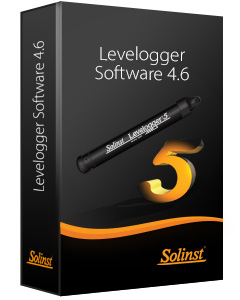What is the maximum depth that CMT wells can be installed?
As at Summer 2003, CMT wells have been installed to a maximum depth of 260 feet. Stock coil lengths are 100 ft, 200 ft & 300 ft. On special order 400 ft coils are available.
Can segments of the CMT tubing be coupled together?
No. The system is designed to be installed in one continuous length, thus eliminating the possibility of leakage at joints.
What if I don't want to monitor seven zones? Do I have to use all the channels?
No. You can use as many or as few as you like. Unused channels do not affect the rest of the CMT System. Some people use two channels to monitor a single zone. They dedicate one of the channels to a Micro Double Valve Pump and use the other channel for measuring water levels. If you use two channels to monitor a single zone, however, you will reduce the number of discrete zones that you can monitor by 50%.
What papers or guidance documents have been published that describe the CMT System?
Several papers describing the CMT multilevel monitoring system have been published and more are being published all the time. The most complete description of the CMT system is contained in a technical paper published in the fall 2002 issue of Ground Water Monitoring and Remediation (Einarson and Cherry, 2002). Note, however, that several improvements to the system have been made since that paper was written. The CMT system is also described in the American Petroleum Institute's 2000 guidance document titled 'Strategies for Characterizing Sites with Releases of MTBE and other Fuel Oxygenates.' These documents and others can be downloaded from the Papers section of our website.
Is there a minimum borehole diameter that should be used for CMT wells?
For installations where sand and bentonite pellets are poured into the borehole annulus from the ground surface, we recommend using CMT centralizers and a borehole diameter of at least 5 inches. That gives the well installer ample space to avoid bridging the sand and bentonite and allows easy access for the Solinst Tag Line. Solinst Double Acting Inflatable Packers are available, by special order, to seal 3", 3.7" and 4" boreholes. Seven-channel CMT wells can be installed through direct-push casing having an inside diameter (ID) of 2 inches or larger. These installations rely on the formation collapsing around the CMT tubing.
What kinds of drilling methods can be usd to install CMT wells?
CMT wells have been installed in boreholes created with nearly all types of drilling equipment. A summary of Drilling Methods & Techniques for installing CMT wells in Unconsolidated Aquifers can be found in the Papers & Information section of the Solinst website.
How do I find a drilling contractor who has experience installing CMT wells?
A listing of drilling contractors who have experience installing CMT wells is included on our website. If you have a contractor that you would like to work with but who has not yet installed a CMT well, please have the contractor contact Solinst to explain the various options for installing CMT wells with different types of drilling equipment. We are happy to assist you and/or your contractor to make sure that your CMT wells are installed successfully. Telephone support is available at no cost. On-site training for you and/or your contractor is available for a small additional fee necessary to cover our time and travel costs.
I've seen pictures of the CMT System installed with bentonite packers. Are they available from Solinst?
Prototype bentonite packers were used during the initial development and testing of the CMT system. Those bentonite seals, which are described in the 2002 Einarson and Cherry paper, proved to be too difficult and time-consuming to construct in the field. Therefore, we recommend that all annular materials, including sand pack and bentonite seals, be poured from the surface in conjunction with CMT System Centralizers.
I've heard that inflatable packers exist that allow for temporary or permanent installations in bedrock aquifers. How do they work?
We have developed Double-Acting Inflatable Packers that are used to seal the annular space between the CMT tubing and the borehole wall in bedrock installations. They are "double acting" in that the inside of the packers expand along with the outside of the packers. By applying a small vacuum to the packers, the inner gland expands slightly. The packers then slide easily over the CMT tubing and can be positioned where needed. When the vacuum is released, the inner gland retracts, securing the packers to the CMT tubing. Clamps are attached to the packers to ensure that they don't move when the well is inserted into the borehole. An inflation tube connects to each of the packers and extends to the ground surface. When the CMT well is fully inserted, the packers are inflated with air, nitrogen, or water. Inflating the packers seals both the borehole annulus and the space between the CMT tubing and the packers. An advantage of this system is that the packers can be deflated and the system removed when monitoring is no longer needed.
Can I install CMT wells with direct-push equipment?
Yes. Many DP contractors are installing 7-Channel CMT wells. The wells are typically installed inside of probe rods equipped with disposable drive points. Once the probe rods have been advanced to the desired depth, the CMT tubing is inserted. Then, the probe rods are retracted, leaving the CMT well in the ground. Most of these installations have been in sandy formations where the soil collapses around the CMT tubing when the probe rods are retracted. Installations in formations that do not collapse are more difficult, especially with small-diameter probe rods. The small inside diameter of the probe rods leaves little space to pour annular materials (i.e. sand and bentonite pellets) from the ground surface.
What is the best way to install sand packs and annular seals between the various monitored zones?
The best way to install sand pack and annular seals is by pouring them into the borehole annulus from the surface or using a tremie pipe. When installing 7-Channel CMT wells this way, we suggest that you have a borehole no smaller than 5 inches in diameter. A borehole 5 inches in diameter or larger allows plenty of room for sand and bentonite pellets to fall to the bottom of the borehole without bridging. Also, be sure to use Solinst's low-profile centralizers to keep the CMT tubing centered in the borehole. These centralizers have been designed to minimize the likelihood of bridging the annular materials when building the well. Also, you may want to use an Anchor Plate to keep the CMT from rising up in the borehole, especially when drive casing (if used) is incrementally withdrawn from the borehole. The Anchor Plate is bolted directly to the Guide Point Port. After you have inserted the CMT well to the bottom of the hole, place a sandpack across the deepest monitoring zone by pouring sand into the annulus until it comes up to the level specified in your well construction design diagram. Be sure to measure the depth of the sand pack frequently with Solinst's Model 103 Tag Line while you are pouring the sand. This ensures that you don't bring the sand pack too high up in the borehole. Once the sand pack is above the bottom monitoring port, pour bentonite pellets to make a seal between the bottom monitoring zone and the overlying one. Contractors have reported good success using coated bentonite pellets for the annular seals. Pour the pellets slowly, and measure the depth of the seal frequently with the tag line to avoid adding too much bentonite. Continue adding alternating layers of sand pack and bentonite seals as described above, up to the levels specified in your well construction design diagram. Additional information about constructing CMT wells is presented in our Model 403 CMT Installation Manual (available on our site).
I don't have room at my job site to lay out the tubing in order to mark and install the intake ports and well screens. What other options do I have?
For long lengths of tubing, e.g. greater than 100 feet, it is often impractical to lay the tubing on the ground at the job site in order to mark and install the various intake ports and well screens. We recommend that you mark the locations of the ports on the tubing ahead of time and bring the coiled CMT tubing to the jobsite. You can then install the ports and well screens at the proper locations as you are lowering the CMT tubing into the borehole. Alternatively, the CMT System can be built anywhere that room is available, then coiled and transported to the site.
How do I decommission CMT wells?
CMT wells can be pressure grouted using a bentonite or cement slurry. The injected fluid will fill each CMT channel and the sand pack adjacent to each intake port. CMT wells can also be over drilled if necessary.
® Solinst and CMT are registered trademarks of Solinst Canada Ltd.
*Patents #6,865,933 B1, #6,758,274 B2, #2,260,587, #6,581,682, #2,347,702, and #2,381,807




